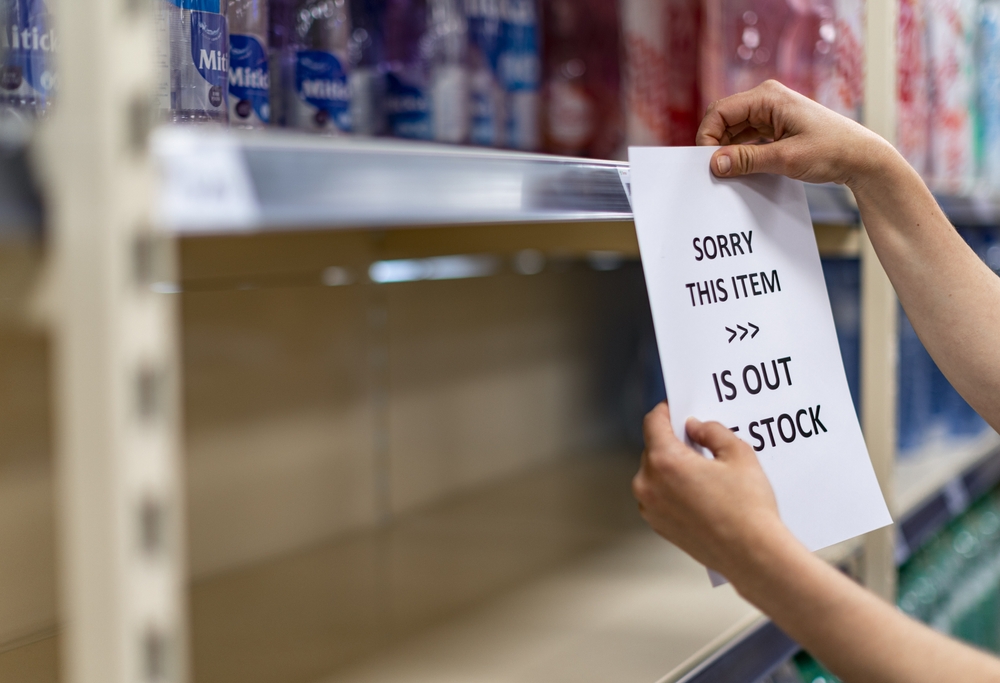
Ongoing supply chain disruption, delays at the border and inflationary pressures on food producers are among the issues UK shoppers blame for rising instances of out-of-stocks on supermarket shelves, according to research by Pricer, the leading in-store automation and communication solutions provider.
Original research of over 1,000 UK shoppers polled by Pricer showed that now typically consumers find almost a fifth (18 per cent) of the items in their weekly food shop unavailable on shelf when they shop in-store, rising +1 percentage point year-on-year. Instances of out-of-stocks were higher when buying groceries online, with over a quarter (28 per cent) reporting food shop items were out-of-stock, prompting them to be missing or substituted in their orders, a rise of +6 per cent year-on-year.
Brexit was the top reason UK shoppers believed was contributing to the shelf gaps they were experiencing in-store, with 40 per cent of respondents citing complications with border checks and additional paperwork making it harder to import food goods into the UK. While the UK government announced it would delay planned post-Brexit checks on fruit and veg for a third time earlier this month, over half (52 per cent) of UK consumers believe more products are unavailable due to the UK’s decision to leave the EU. Meanwhile, despite only a small proportion of UK food trade relying on Red Sea routes, 39 per cent of UK shoppers felt that the supply chain disruption from the Red Sea Crisis had led to more stock being missing from shelves in-store.
Over a third (38 per cent) of UK consumers blamed increased shelf gaps on inflationary pressures on food suppliers’ production and manufacturing, impacting their ability to meet demand, and a further 37 per cent felt rising out-of-stocks were due to food producers going out of business because of rising cost pressures. In the first half of last year, advisory firm, Kroll, reported that the number of UK food and drink businesses falling into administration had increased by +5.6 per cent compared to the year prior, with cost and wage inflation, supply chain issues and labour challenges all contributing to this increase.
And, at the same time grocery retailers are facing multifaceted supply chain challenges, consumers expectations around product availability are rising. Now, three-quarters (74 per cent) of customers expect products to be available when they go into store, an increase of +5 percentage points year-on-year. And while over two-thirds (67 per cent) would make do with an alternative if an item was out-of-stock, more than two-fifths (43 per cent) would abandon their entire basket.
Peter Ward, UK Country Manager at Pricer, commented: “Our research shows a direct correlation between on-shelf availability (OSA) and customer loyalty, with 72 per cent of shoppers more likely to shop with grocers who have good product availability. We know out-of-stocks cause losses in so many areas – lost sales, lower customer satisfaction, reduced market share – as well as higher labour costs resulting from trying to fix poor OSA with outdated systems and processes. By fostering collaboration among retail managers, staff, and technology companies, supermarkets can significantly improve their inventory management and customer service.”








Share